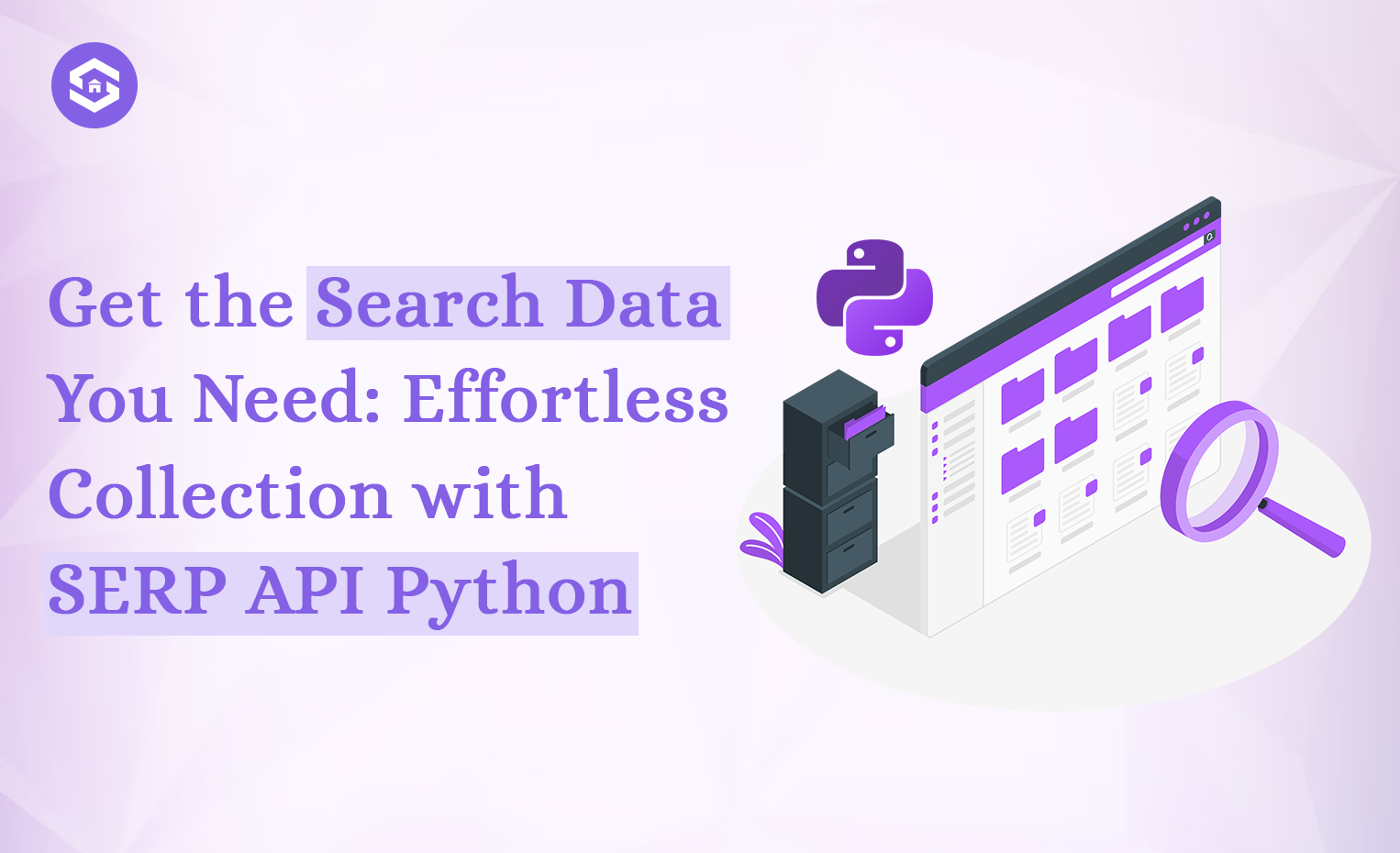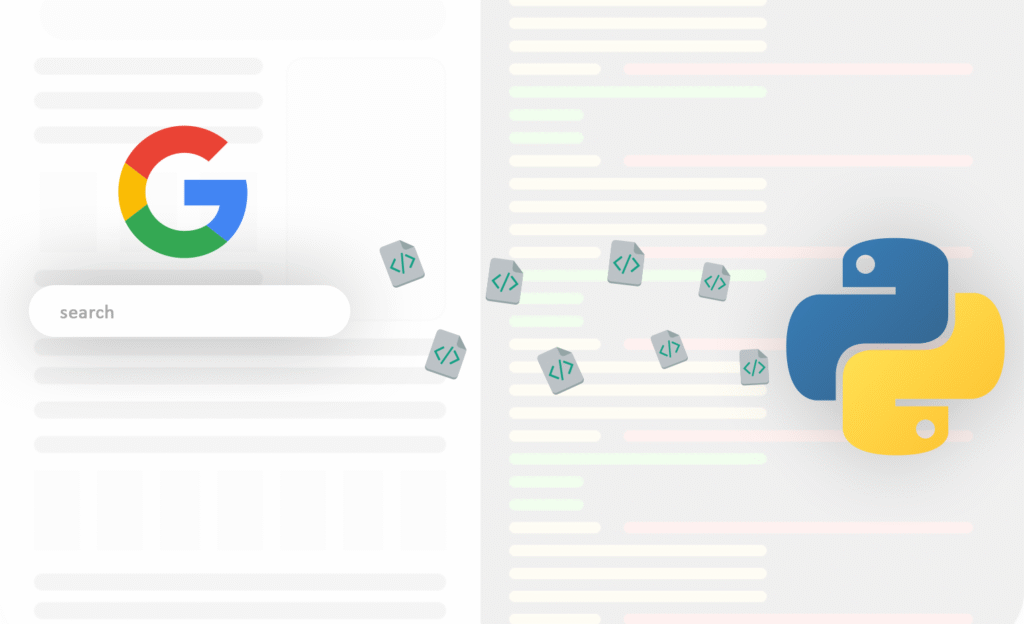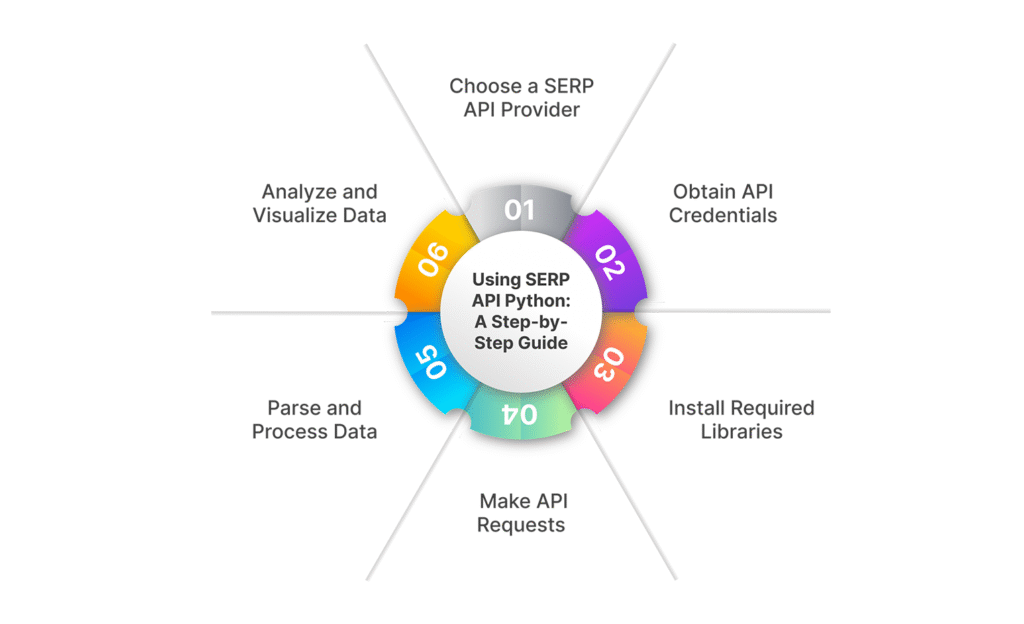SERP API Python Guide: Effortless Data Analysis for SEO
5 min read
5 min read

Table of Contents
Table of Contents
Harnessing the vast knowledge of search engines became much more accessible, thanks to the magic of Python and SERP APIs.

In this blog post, we’ll dive into SERP API Python, empowering you to extract and analyze search results for many applications effortlessly.
Whether you’re a seasoned developer or just getting started with code, this guide offers everything you need to know to tap into the potential of search data.
Imagine having a virtual assistant that can instantly fetch and organize any information you need from search engines.
A SERP API does that. It bridges your code and search engines like Google, Bing, and others, allowing you to programmatically retrieve and process search results.

Simplicity and Readability: Python’s clear syntax makes it easy to learn and use, even for those with less coding experience.
Versatility: It’s a general-purpose language that excels in data manipulation, analysis, and visualization, perfectly aligning with SERP API use cases.
Rich Ecosystem: Python boasts a vast collection of libraries and tools for web scraping, data processing, and machine learning, seamlessly integrating with SERP APIs.
Here’s a Python example using the SerpApi library to retrieve search results for an entity, incorporating relevant images:
Entity extraction: The code effectively extracts information about the specified entity (Elon Musk in this example).
Image incorporation: It demonstrates how to extract and potentially display associated images, enhancing the visual presentation of results.
Clarity and conciseness: The code is well-structured and easy to follow, with explicit comments explaining each step.
Flexibility: The example can be easily adapted to search for different entities and incorporate additional data points.
Now that we’ve covered the basics let’s explore the exciting possibilities that SERP API Python unlocks:
1. Choose a SERP API Provider: Select a reputable provider with Python libraries or SDKs, such as SERPHouse or Scrape-it.
2. Obtain API Credentials: Sign up for an account and obtain your API key.
3. Install Required Libraries: Install the necessary Python libraries or SDKs for your chosen provider.

4. Make API Requests: Use the library’s functions to make API requests, specifying search queries, locations, devices, and other parameters.
5. Parse and Process Data: Extract relevant information from the API response, such as organic results, featured snippets, knowledge graphs, etc.
6. Analyze and Visualize Data: Use Python’s data analysis and visualization tools to uncover insights and patterns.
SERP API Python opens the door to a vast ocean of search data, empowering you to make informed decisions, gain valuable insights, and stay ahead of the curve in various fields.
With its ease of use and powerful capabilities, it’s a must-have tool for anyone looking to leverage the power of search engines in their work or research.
So, take the plunge, explore the possibilities, and unleash the potential of SERP API Python!
Ready to start your SERP API Python journey?
Check out the resources provided above and get started today! Please comment below if you have any questions or need further guidance; the SERPHouse community will be happy to help!